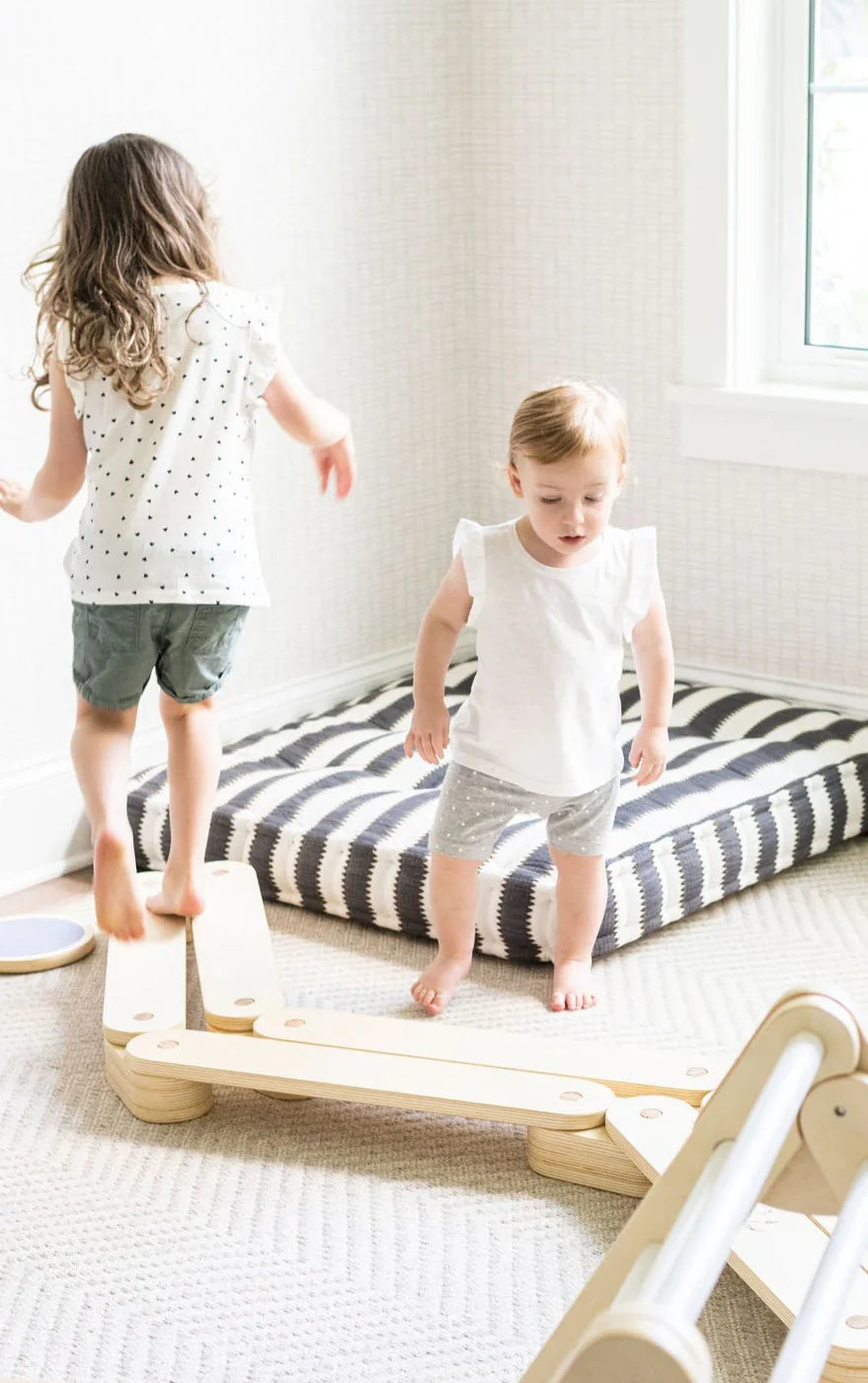17 Engaging Indoor Gross Motor Activities For Energetic Kids
Need to keep your energetic kids active indoors? Look no further! This guide offers 17 engaging indoor gross motor activities that will help your children develop essential motor skills while having a blast. From imaginative play to relaxed sports, we’ve got you covered.
And remember, when the kids start bouncing off the walls, it’s time to channel that energy into something productive—because if you don’t, they’ll surely turn your living room into their personal playground!
Dive in and discover fun, safe, and effective ways to keep those little muscles moving indoors.
The Importance of Indoor Gross Motor Activities

Ever wondered why your child can’t resist a good tumble or roll?
It’s because these activities aren’t just fun -- they’re fundamental for their holistic development as well.
For instance, engaging in indoor gross motor activities contributes to the brain development of young children by growing nerve cells and forging neural connections, both of which are essential for improved learning and memory. As they enter preschool age, this leads to better test scores, reading comprehension, inhibitory control, and reduced off-task behavior, among many other cognitive benefits.
Gross motor development can also help language development, even in kids as young as 10-14 months. The faster a child develops their new skills in gross motor movement, the faster their speech skills develop as well.
Additionally, gross motor skills lays the groundwork for fine motor skills, which are critical for planning and sequencing body movements. This foundation is key for other learning areas.
So, the next time your child is engaging in gross motor movement through physical activities, remember that they’re not just burning off excess energy -- they’re building important life skills as well.
Some examples of gross motor activities that involve gross motor movements include:
-
Hopping around the house
-
Spinning in circles
-
Jumping on a trampoline
-
Climbing on playground equipment
-
Riding a bike
-
Playing catch
And let’s not forget the importance of indoor gross motor activities like ball play and obstacle courses that improve hand-eye coordination and control, enhancing a child's balance and awareness.
But what happens if these gross motor skills aren’t developed properly?
Well, poor development can lead to learning disabilities and delays in reading and math skills, for starters. This is why it's important to make sure that your child's regularly honing their gross motor skills even when the weather dictates that they stay indoors.
Fun and Easy Indoor Gross Motor Games
Now that we’ve seen why these indoor games are so important, let’s jump into the fun part -- the games themselves!
These won't only provide hours of enjoyment but will also improve hand-eye coordination, balance, and body awareness in your child.
Balance Beam Challenges
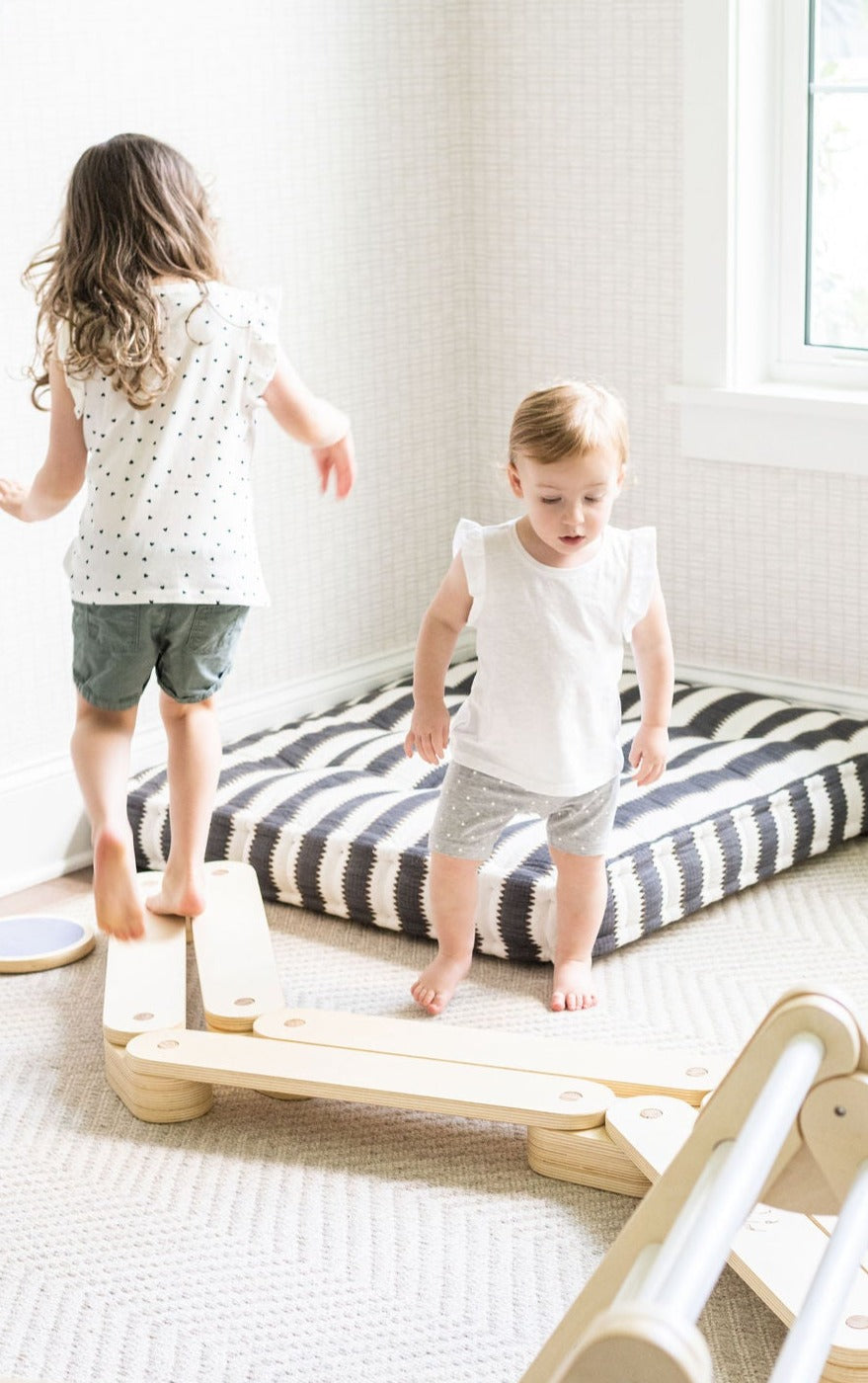
Ever thought your living room could double as a gymnastics arena? With a little creativity, you can set up balance beam challenges right at home!
Household items can be repurposed into DIY balance beams to help children improve their balance and coordination indoors. A line of pillows or couch cushions can create a soft yet challenging balance beam. For a firm balance beam, pool noodles cut lengthwise and taped together can provide a sturdy base.
But if you want to give them the best equipment, consider the Poppyseed Play Wooden Balance Beam. The main benefit a premade balance beam like this has over a DIY one is that it's optimized for this exact purpose. It offers the right support for little feet and helps your child develop their skills in a safe, structured way while still offering options to customize the experience.
The best part? Cleanup is a breeze because it can be stored flat, and you don’t have to worry about your little gymnasts getting hurt.
Pillowcase Sack Races
Remember the good old sack races from your childhood? They’re back, with a twist!
Pillowcase sack races are an engaging indoor gross motor activity that involves large muscle groups. This activity is beneficial for improving coordination and balance as children hop forward in the sack.
Just ensure a clear pathway in a room and use soft materials like pillows on either side to mark the starting and finishing points for safety. And for added fun and challenge, you can also make it a team sport for multiple kids.
Animal Movement Races
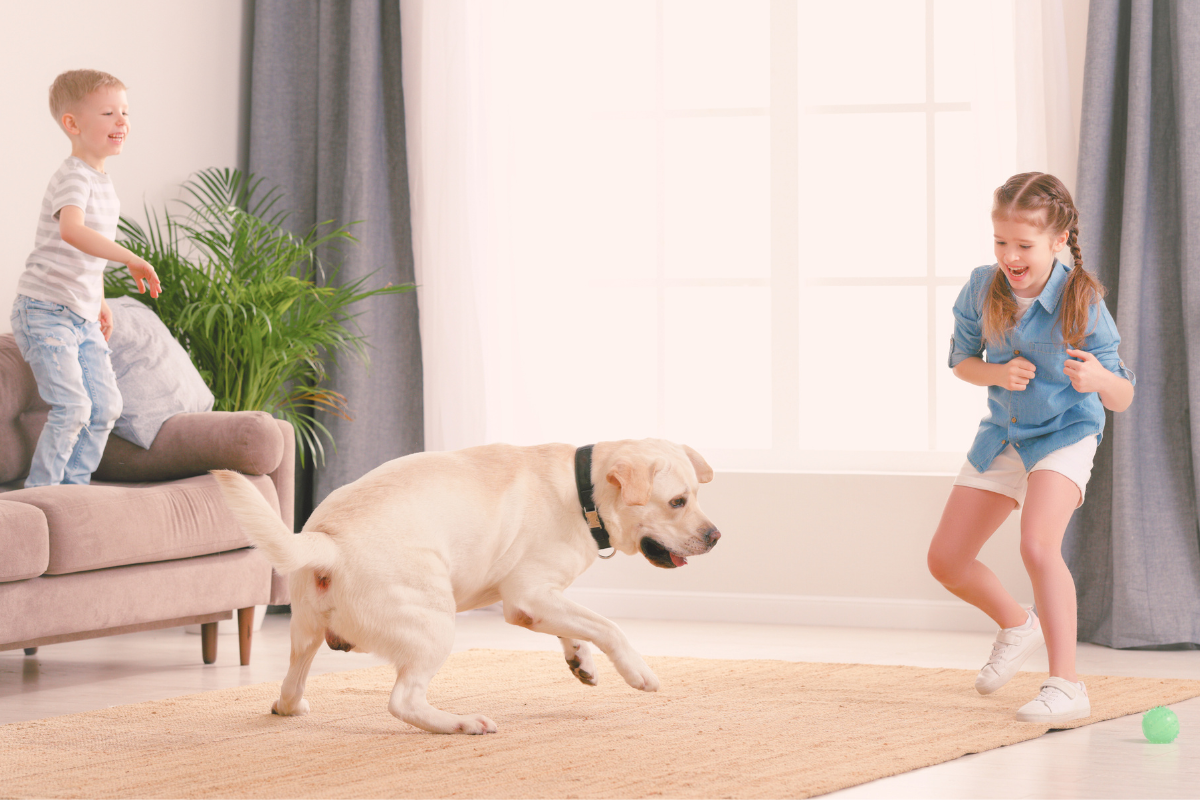
If you want to unleash the inner animal in your kids, you might want to let the animal kingdom reign in your living room for a day.
Of course, we don't mean that literally -- although we surely wouldn't mind if Fido wants to jump in. Introducing animal movement races, where kids develop gross motor skills as they scuttle like crabs, leap like frogs, or waddle like ducks.
You can also make it more challenging yet still enyojable by incorporating it into the human knot challenge. Assign an animal for each person, and they'll have to pretend they're an animal while they untangle themselves from the knot.
Creative Obstacle Courses for Indoor Play
If you’re up for a little more challenge and creativity, how about setting up an indoor obstacle course? These courses incorporate a range of movements, like:
-
crawling
-
hopping
-
balancing
-
jumping
Each course can be customized to suit different spaces and skill levels.
The key to a successful indoor obstacle course is safety, so remember to use cushions, yoga mats, and blankets for padding, and remove sharp or breakable items when constructing.
Indoor Climbing Challenges
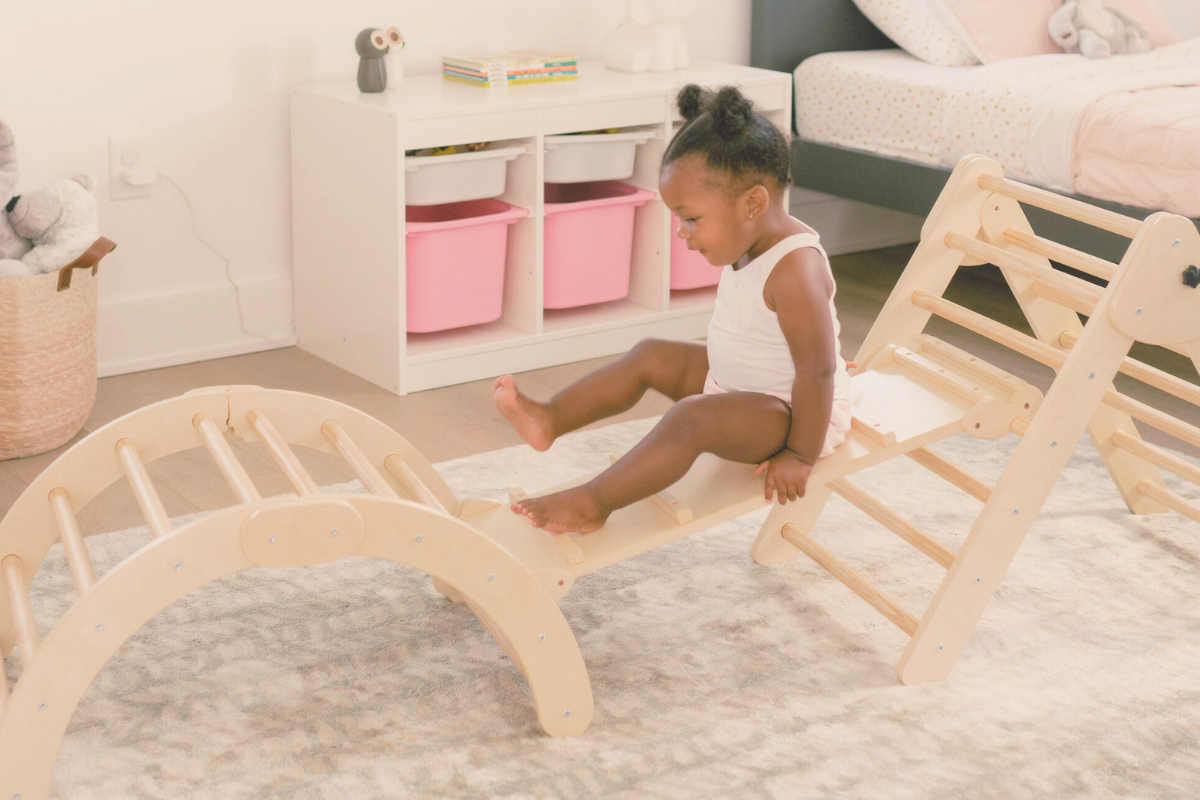
If your kids have a knack for climbing, why not bring the adventure indoors with climbing challenges?
Climbing in kids can enhance coordination and physical strength, engaging the large muscle groups vital for children’s gross motor development. It's also a thrilling activity that helps strengthen upper body muscles in children.
One way that you can promote climbing in your child is to use products specifically designed for climbing, like the Poppyseed Play Foldable Climbing Arch and the Climbing Triangle & Ramp.
And if you want both for the ultimate climbing experience, consider getting the Ultimate Climbing Set, which saves you 10% as opposed to getting them separately.
The best part? These indoor climbing products can be installed in a home setting, providing a safe environment for kids to exercise their climbing skills. So, let your little monkeys climb their hearts out!
Furniture Maze Adventures
Did you know that your furniture can double as a playground? Chairs can be lined up to create tunnels for kids to crawl through, while books can serve as low walls to guide the path of the maze.
Not only will this keep your kids entertained for hours, but it will also give you a new appreciation for your furniture!
Tunnel Crawls and Blanket Forts
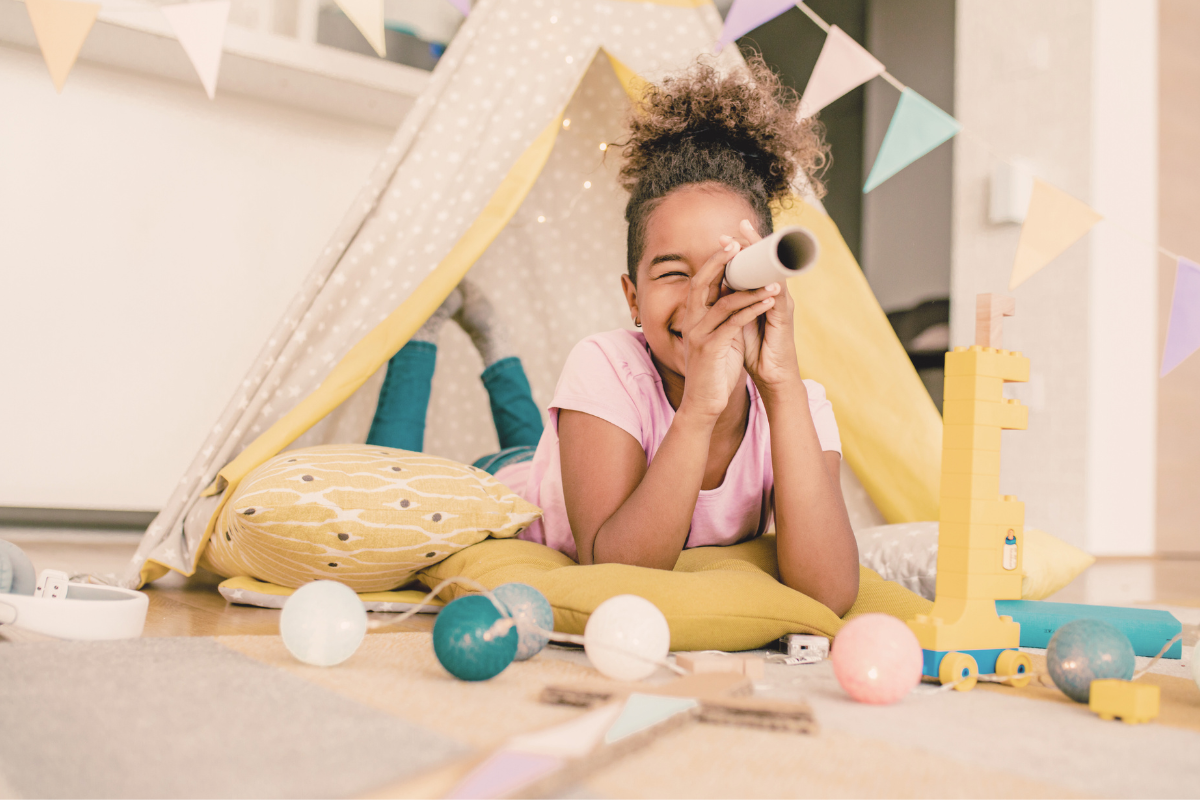
Remember the joy of building a fort with blankets as a child? You can bring back the magic with tunnel crawls and blanket forts.
Blankets and play mats can be creatively used to build playful and imaginative crawling spaces for children. These crawling spaces encourage movement exploration and can be adapted to various indoor environments, making them a versatile activity for energetic kids.
Indoor Sports-Inspired Activities
Who says sports can only be played outdoors? With a little creativity and some modifications, your favorite sports can be brought indoors.
From mini basketball shootouts to indoor soccer drills, these activities are not only fun but also beneficial for your child’s gross motor development.
Mini Basketball Shootout
Bored with the same old bedtime routine? Spice it up with a mini basketball shootout!
A mini basketball hoop can be installed indoors in playroom areas to provide children with a fun and convenient way to practice basketball. This not only encourages children to engage in shooting practice but also enables friendly competition.
Plus, it adds a competitive and enjoyable twist to younger kids’ routine, helping enhance their gross motor skills even if they're stuck inside the house. Who knows, you might have a future NBA star in the making!
Tabletop Tennis
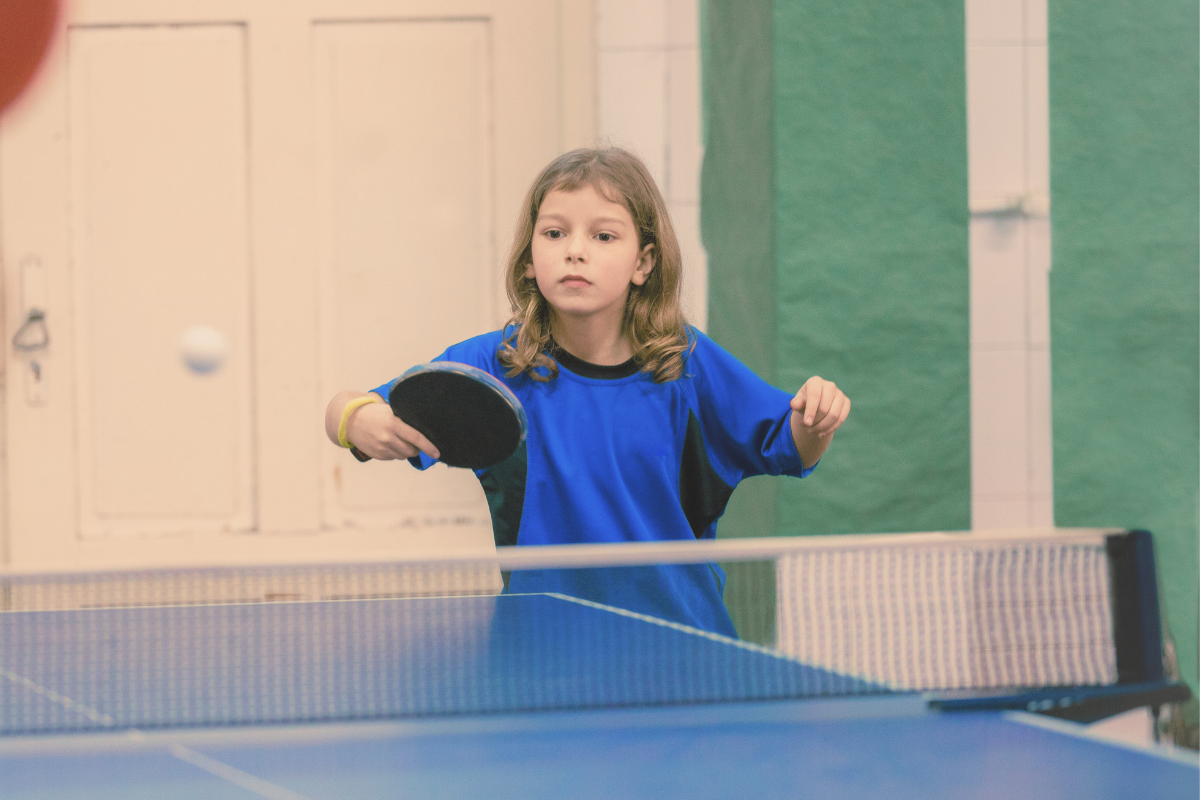
Love tennis but don’t have a court? No problem! We've got tabletop tennis -- an engaging indoor gross motor activity that can be played on a regular table. All you need is a little creativity, and your dining table can double as a tennis court.
This offers an exciting way to engage in indoor physical activity with a fun game. So, grab your paddles and let the games begin!
Indoor Soccer Drills
Similarly, you don’t need a field to play soccer. With soft foam balls and a clear space, your living room can turn into a mini soccer field.
Indoor soccer drills take advantage of the flat surface provided by indoor settings, helping players to enhance their ball handling skills.
The continuous play aspect of indoor soccer leads to more frequent touches of the ball and thus improves ball control. So, lace up those indoor shoes and get ready for some soccer fun!
Sensory-Focused Gross Motor Activities
While all these games are fun and beneficial, let’s not forget about the importance of sensory-focused activities. These activities not only enrich the sensory experience for children but also substantially enhance their gross motor skills.
Bubble Popping Extravaganza
Who doesn’t love bubbles? They’re not just fun to play with but also great for improving hand-eye coordination and gross motor skills.
From catching bubbles to keeping them in the air, there are numerous ways to incorporate bubbles into playtime. And for toddlers, even playing with foam from bubble solution offers a fun sensory experience that also engages their small muscles as well as their large muscles.
Musical Freeze Dance
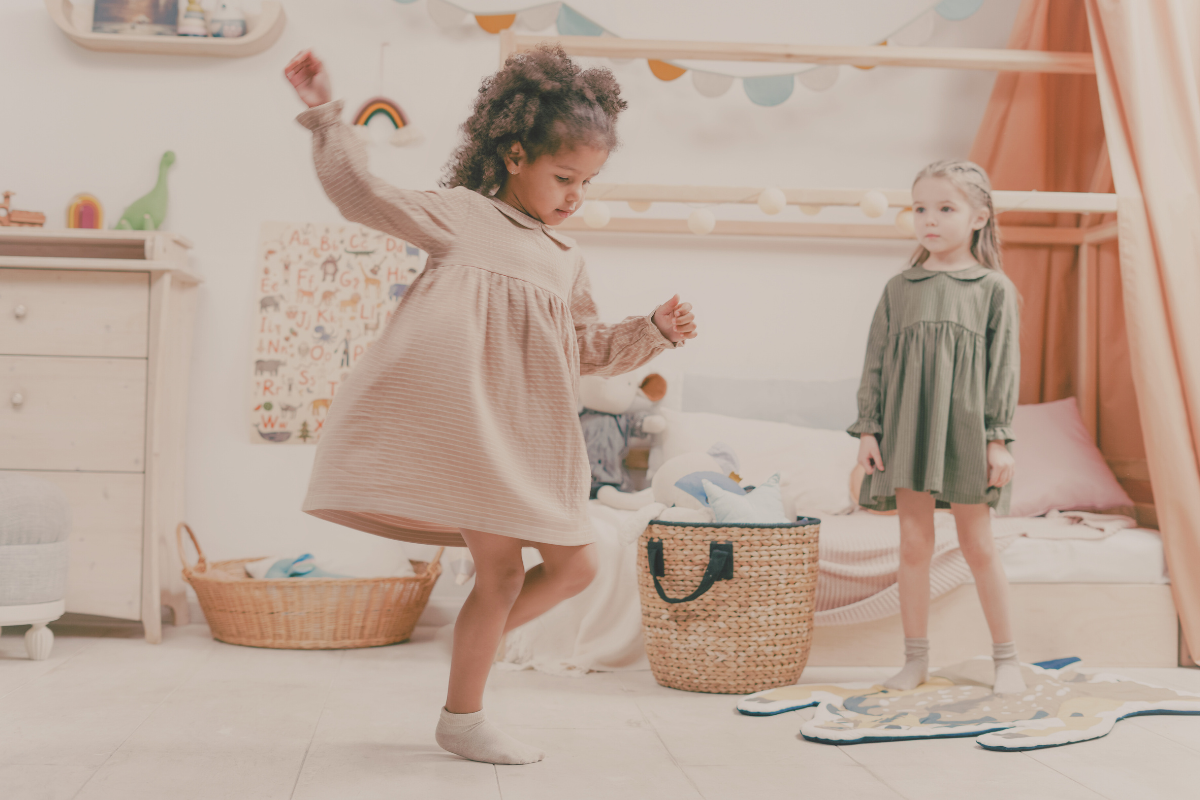
A musical freeze dance is perfect for getting kids moving and improving their body awareness and coordination. The rules are simple too: you dance while there's music and freeze once the music stops.
This activity not only allows them to move different body parts, but it also improves their attention span because they have to keep an ear out for the music.
Additionally, you can alternate between different dancing styles and speeds, such as slow waltzing or fast twirling for better coordination skills.
Indoor Team-Building Gross Motor Activities
While it’s great to improve individual skills, it’s equally important to promote cooperation and communication among children.
That’s where indoor team-building gross motor activities come into play. From relay races to cooperative parachute games, these activities are perfect for enhancing teamwork and gross motor skills at the same time.
Relay Races with a Twist
Relay races are a classic team-building activity, but why not add a twist? Relay races can be modified to include different challenges such as:
-
Using eggs and spoons
-
Dressing up
-
Passing hula hoops
-
Transporting pennies
-
Using water
These variations promote teamwork and coordination while improving children's gross motor skills at the same time.
Cooperative Parachute Games
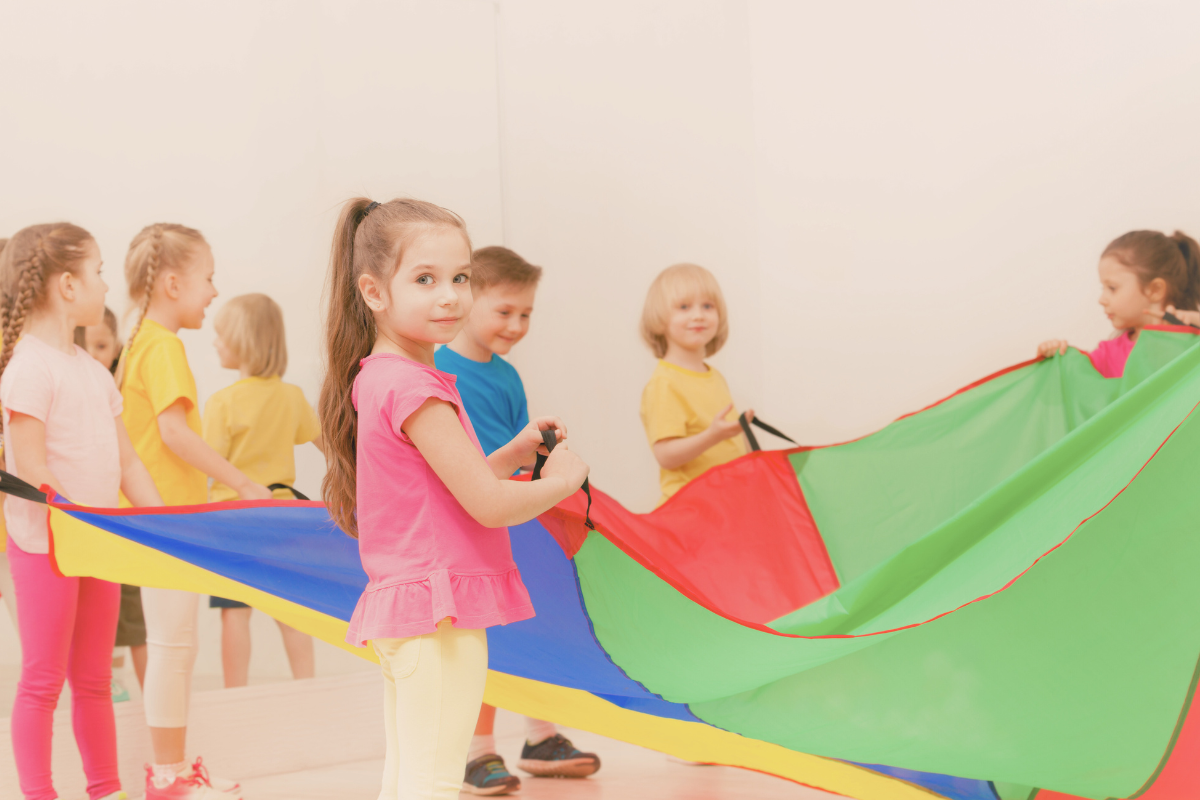
Remember those colorful parachutes from your school’s PE class? These games engage children in activities that demand coordination and teamwork, such as moving in unison to manipulate the parachute in various ways.
Human Knot Challenge
Ready for a real challenge? Well, try the human knot challenge!
This is a physical puzzle where children stand in a circle, reach across to hold hands with two other participants, and then try to untangle the group without breaking hand contact. Not only is it absolutely enjoyable, but it also enhances problem-solving abilities, communication, and gross motor skills.
Adapting Outdoor Games for Indoor Play
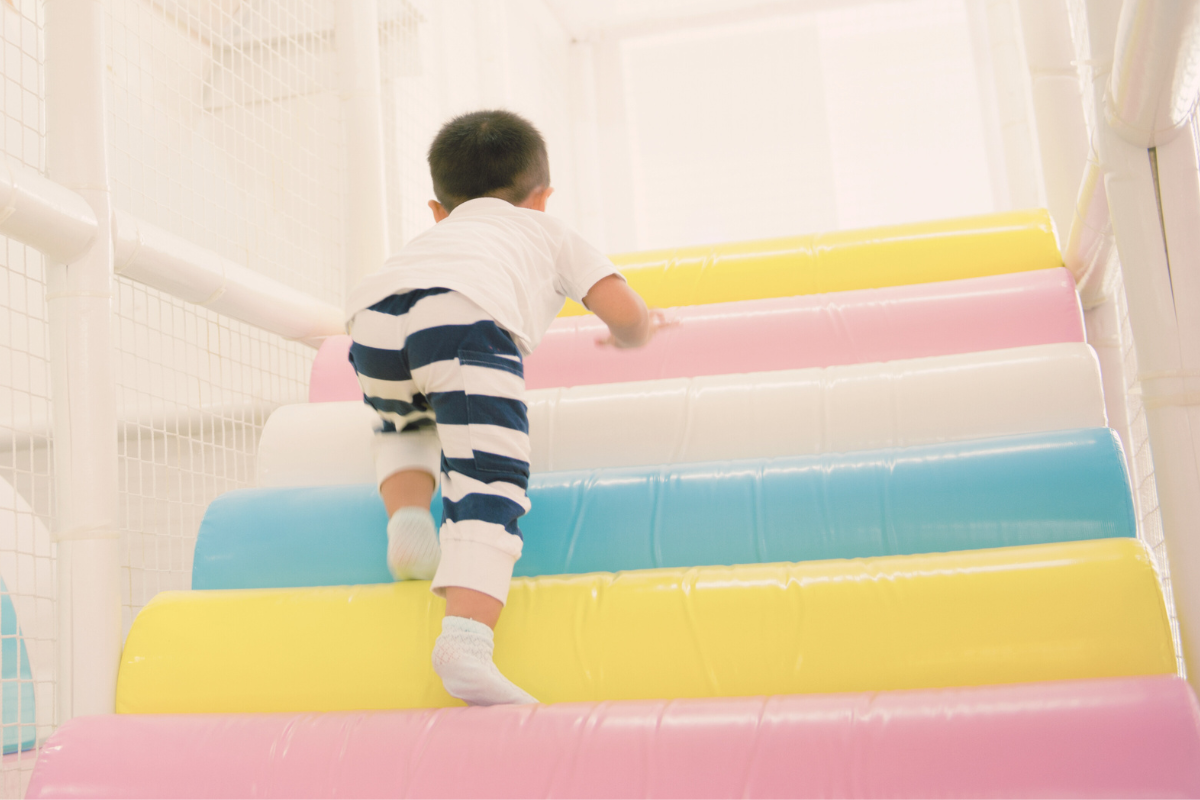
Just because you’re stuck indoors doesn’t mean you can’t enjoy your favorite outdoor games. Many outdoor games can be safely and effectively adapted for indoor play.
Here are some ideas on how you can bring the fun of the outdoors into your living room:
-
Indoor hopscotch
-
Paper plate frisbee toss
-
Balloon volleyball
-
Indoor bowling
-
Indoor ball toss
-
Sock basketball
-
Pillow fort obstacle course
Get creative and have fun with these indoor activities, which are adaptations of outdoor games!
Indoor Hopscotch
Hopscotch isn’t just for sidewalks! With a little creativity, you can bring this outdoor classic indoors.
Masking tape or painter's tape can be used to outline a hopscotch grid on hard floors without leaving residue, and you can increase the difficulty by hopping on every number, counting backwards, or even skipping numbers on different lines.
If you want a fun twist, you can also add the Poppyseed Play Balance Stepping Stones to the mix. Each stone is a different color, so you can make it part of the rules to hop on the stones at a specific order, for example. There are plenty of other games you can play with stepping stones, so we recommend checking out our list if you're interested.
Paper Plate Frisbee Toss
Who needs a frisbee when you’ve got paper plates?
Paper plates provide a light and safe alternative for indoor frisbee play. Just tape two paper plates together, and you’ve got an indoor frisbee. Add in some decorating for a nice craft activity before the real game begins.
Bean Bag Lawn Bowling
Get ready to strike with bean bag lawn bowling!
This game can be played indoors by setting up empty plastic bottles as pins. This adaptation of lawn bowling is not only safe and enjoyable but also beneficial for improving gross motor skills. And if you don't have bean bags, you can easily swap it out for a soft ball or stuffed animal.
6 Effective Tips to Get Your Kids Moving

Can't seem to convince your kids to get up from the floor? Here are six tried and tested tips that you can use!
1. Make it Fun
Turn exercise into a game by setting up high-movement activities like we listed above. Think of it as "American Ninja Warrior: Living Room Edition."
That said, make sure you baby-proof everything before doing this. After all, you know the only thing faster than your toddler's legs? Their ability to find the one fragile item in the house!
2. Try Interactive Video Games
Use motion-sensing video games that require physical activity. The Nintendo Switch, for example, has games that were specifically designed to get the gamer moving in real-life. And if you don't mind an older device, nothing beats the Nintendo Wii when it comes to movement activities.
In general though, video games are a win-win-win: they get some screen time, they get to move and be active, and you get a much-needed break from the chaos.
3. Set a Routine
Incorporate regular physical activity and simple exercises into their daily schedule. Consistency helps kids anticipate and look forward to active playtime.
Plus, routines are surefire way to make sure that you always have the supplies needed for your indoor activities. After all, you know how forgetful you can be when you've got a trillion things to check off on your to-do -- just a typical day for us parents.
4. Offer Choices
Another tip would be to let your child choose from different activities. Giving them a sense of control can increase their willingness to participate.
Sometimes, especially with younger kids, the only reason why they don't want to move is that they don't like the activity you've chose. They may have other great ideas bubbling inside but just don't know how to verbalize it yet.
5. Reward Participation
And of course, once they've finally given in, you shouldn't forget to reward them. Reward systems can encourage physical activity. It doesn't have to be anything fancy -- simple rewards like stickers, extra playtime, or whatever it is that your child likes can make a big difference. Every parent knows the value of a good bribe!
6. Join Them
When you can't beat them, join them. If your kids still don't want to budge, the best thing you can do is to lead by example.
Kids love it when parents join in. Whether it's playing tag, creating a pillow fort together, or just doing simple activities together, your participation makes it a hundred times more fun. We love this tip because not only is it a great way to get them moving, but you'll get to create amazing new memories that will last them a lifetime, too.
Final Thoughts
From DIY balance beam challenges to indoor soccer drills, we’ve explored a plethora of indoor gross motor activities that are not only fun and engaging but also crucial for children’s development.
So, the next time you’re stuck indoors with your energetic kids, remember that each tumble, hop, and leap is a step towards their cognitive, physical, and emotional development!
Frequently Asked Questions
What are gross motor stationary skills?
Gross motor stationary skills are all about showing off your moves without going anywhere! They include head control, sitting balance, standing on one foot, and a whole lot of other impressive maneuvers.
What is an indoor gross motor activity?
An indoor gross motor activity is basically a way to stay active and move around even when you're stuck inside the house. This is especially important in today's digital age where kids are increasingly growing up in front of screens.
Why are indoor gross motor activities important?
Indoor gross motor activities are important because they boost brain development, improve memory, and set the stage for fine motor control. So, don't underestimate the power of indoor playtime, especially when it's raining cats and dogs outside.
Can sports be played indoors?
Sports can definitely be played indoors. You can bring the excitement indoors with sports like mini basketball, indoor soccer, and tabletop tennis. No need to worry about bad weather ruining your game plans.
